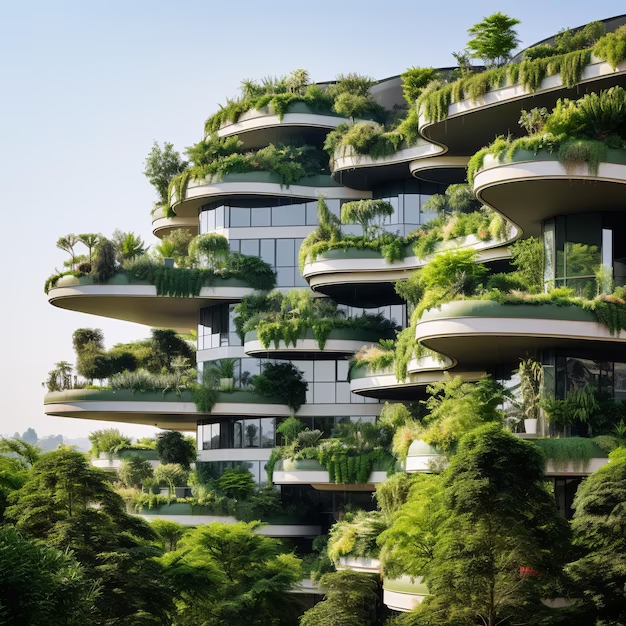wherearewegoing.net – Green building innovations are transforming the construction industry worldwide, aiming to reduce the environmental impact of buildings while improving energy efficiency, sustainability, and occupant well-being. These innovations span various aspects of building design, construction, and operation, including materials, energy systems, water management, and waste reduction. Here are some notable green building innovations from around the world:
1. Net Zero Energy Buildings (NZEB)
Net Zero Energy Buildings are designed to produce as much energy as they consume on an annual basis, primarily through renewable energy sources like solar panels and wind turbines. The Bullitt Center in Seattle, USA, is an example, featuring a six-story office building that generates more energy than it uses.
2. Living Buildings
The Living Building Challenge sets a rigorous standard for green building, requiring buildings to be self-sufficient in terms of energy, water, and waste. The Omega Center for Sustainable Living in Rhinebeck, New York, USA, is a notable example, treating all its waste on-site and using it to create energy.
3. Green Walls and Roofs
Green roofs and walls are becoming increasingly popular for their ability to reduce energy consumption, improve air quality, and provide habitat for wildlife. The Bosco Verticale in Milan, Italy, is a pair of residential towers covered in vegetation, creating a vertical forest in the city.
4. Smart Glass Technology
Smart glass can change its tint in response to sunlight, reducing the need for artificial lighting and minimizing heat gain in buildings. This technology is used in the Willis Tower in Chicago, USA, to reduce energy consumption.
5. Cross-Laminated Timber (CLT)
CLT is an engineered wood product that is revolutionizing the construction of tall timber buildings. It is sustainable, renewable, and has a much lower carbon footprint than steel or concrete. The Brock Commons Tallwood House at the University of British Columbia, Canada, is one of the tallest wood buildings in the world, constructed using CLT.
6. Rainwater Harvesting and Greywater Systems
These systems collect and reuse water, significantly reducing a building’s demand for fresh water. The Eden Project in Cornwall, UK, uses rainwater harvesting and greywater systems to manage its water needs.
7. Advanced Insulation Materials
Innovative insulation materials, such as aerogels and vacuum insulated panels, offer superior thermal performance, reducing heating and cooling needs. The PlusEnergy House in Freiburg, Germany, uses advanced insulation to achieve a net energy surplus.
8. Microgrids
Microgrids are local energy grids that can disconnect from the traditional grid and operate autonomously. They often incorporate renewable energy sources and energy storage systems, enhancing resilience and sustainability. The Santa Rita Jail in Dublin, California, USA, has a microgrid that includes solar panels and battery storage.
9. Biomimicry
Biomimicry involves designing buildings and materials that mimic nature’s efficiency and resilience. The Eastgate Centre in Harare, Zimbabwe, uses termite mound ventilation principles to naturally cool the building, reducing the need for air conditioning.
10. 3D Printed Houses
3D printing technology is being used to construct houses quickly and with less waste. The technology can also create complex shapes that are not feasible with traditional construction methods. The first 3D-printed house in Europe was built in Eindhoven, the Netherlands.
These innovations are leading the way in sustainable building practices, demonstrating that environmental responsibility and architectural creativity can go hand in hand. As technology advances and awareness of environmental issues grows, we can expect to see even more innovative green building solutions emerge worldwide.
